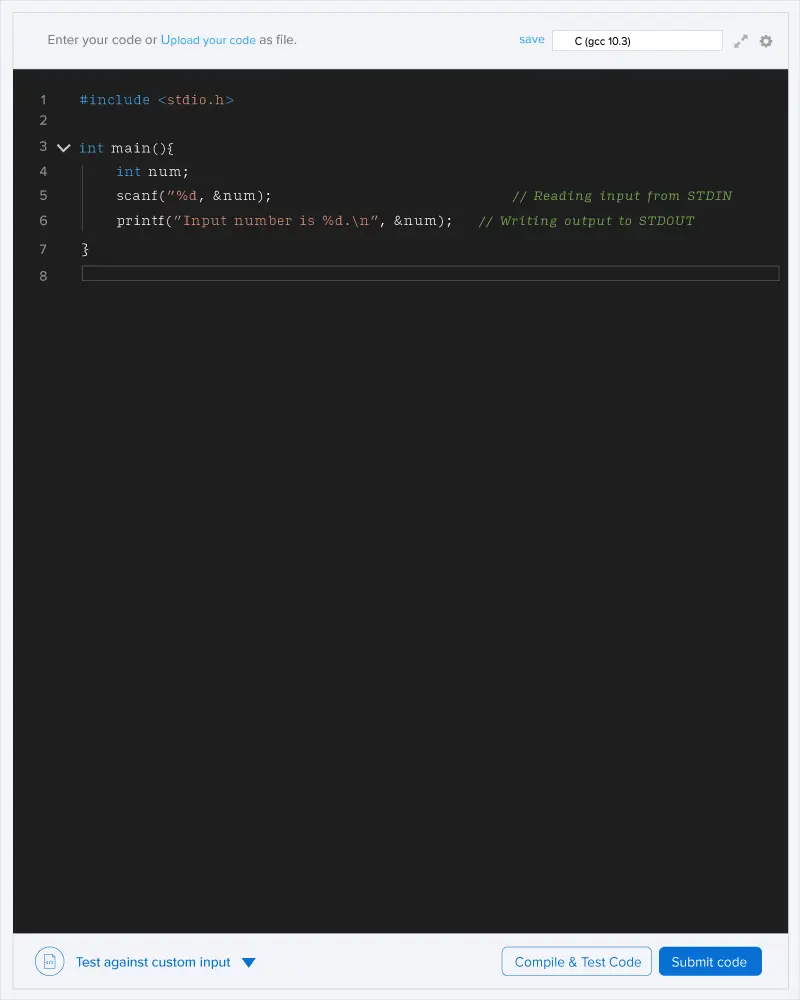You are given 2 arrays A and B of length N and M respectively. You define F(A, B) as follows:
F(A,B)=N∑i=1M∑j=1A[i]×B[j]×(i+j)
You are also given an integer Q denoting the Q queries of the following types:
- 1 i j: Swap A[i] and B[j], that is you replace the ith element in A with B[j] and jth element in B with A[i]
- 2 i j: Swap A[i] and A[j], as described above
- 3 i j: Swap B[i] and B[j], as described above
Task
Given Q queries in form of array queries, you need to output Q + 1 integers. The initial value of F(A, B) and the values after each query. The value of F(A, B) can be very large so, output the values modulo 998244353.
Notes
- Assume 1-based indexing
- Queries are dependent.
Example
Assumptions
- T = 1
- N = 2
- M = 2
- A = [2, 4]
- B = [1, 5]
- Q = 1
- queries = [ [1, 2, 1] ]
Approach
- You first evaluate F(A, B) = A[1]*B[1]*( 1 + 1 ) + A[1]*B[2]*( 1 + 2 ) + B[1]*A[2]*( 1 + 2 ) + B[2]*A[2]*( 2 + 2 ) = 2*1*2 + 2*5*3 + 1*4*3 + 5*4*4 = 4 + 30 + 12 + 80 = 126.
- You swap A[2] and B[1], therefore A becomes [2, 1] and B becomes [4, 5], F(A, B) = A[1]*B[1]*( 1 + 1 ) + A[1]*B[2]*( 1 + 2 ) + B[1]*A[2]*( 1 + 2 ) + B[2]*A[2]*( 2 + 2 ) = 2*4*2 + 2*5*3 + 4*1*3 + 1*5*4 = 16 + 30 + 12 + 20 = 78.
- You, therefore, output "126 78" in a single line.
Function description
Complete the array_queries function provided in the editor. This function takes the following 6 parameters and returns a vector/array denoting the values of F(A, B) for all queries:
- N: Represents an integer denoting the length of array A
- M: Represents an integer denoting the length of array B
- A: Represents the integer array A
- B: Represents the integer array B
- Q: Represents an integer denoting the number of queries
- queries: Represents a 2D array/vector denoting queries of the type "1 i j" or "2 i j" or "3 i j". Therefore, the size of the queries array is Q*3.
Input format
Note: This is the input format that you must use to provide custom input (available above the Compile and Test button).
- The first line contains a single integer T, which denotes the number of test cases. T also specifies the number of times you have to run the array_queries function on a different set of inputs.
- For each test case:
- The first line contains an integer N denoting the length of the array A.
- The second line contains an integer M denoting the length of the array B.
- The third line contains N space-separated integers denoting array A.
- The fourth line contains M space-separated integers denoting array B.
- The fifth line contains an integer Q denoting the number of queries.
- The next Q lines follow. For each line:
- The first line contains three space-separated integers denoting tp, i and j, where tp = 1, 2 or 3.
Output format
For each test case in a new line, print Q + 1 space-separated integers denoting the initial value of F(A, B) and F(A, B) after each query. Do not forget to take modulo 998244353.
Constraints
1≤T≤101≤N,M≤1051≤A[i],B[i]≤1061≤Q≤105If query is of type 1: 1≤i≤N,1≤j≤MIf query is of type 2: 1≤i,j≤NIf query is of type 3: 1≤i,j≤M
Code snippets (also called starter code/boilerplate code)
This question has code snippets for C, CPP, Java, and Python.
The first line contains the number of test cases, T = 2.
The first test case
The first test case is the same as the example. Please refer to that.
The second test case
Assumptions
- T = 1
- N = 3
- M = 2
- A = [3, 5, 1]
- B = [4, 1]
- Q = 3
- queries = [ [1, 1, 2], [2, 1, 3], [3, 1, 2] ]
Approach
- You first evaluate F(A, B) = A[1]*B[1]*( 1 + 1 ) + A[1]*B[2]*( 1 + 2 ) + A[2]*B[1]*( 2 + 1 ) + A[2]*B[2]*( 2 + 2 ) + A[3]*B[1]*( 3 + 1 ) + A[3]*B[2]*( 3 + 2 ) = 3*4*2 + 3*1*3 + 5*4*3 + 5*1*4 + 1*4*4 + 1*1*5 = 24 + 9 + 60 + 20 + 16 + 5 = 134.
- You swap A[1] and B[2], therefore A becomes [1, 5, 1] and B becomes [4, 3], F(A, B) = 1*4*2 + 1*3*3 + 5*4*3 + 5*3*4 + 1*4*4 + 1*3*5 = 8 + 9 + 60 + 60 + 16 + 15 = 168.
- You swap A[1] and A[3], therefore A becomes [1, 5, 1] and B remains the same. Recall that queries are dependent. The value of F(A, B) comes out to be 168.
- You swap B[1] and B[2], therefore A remained the same and B becomes [3, 4]. Recall that queries are dependent. The value of F(A, B) comes out to be 175.
- You, therefore, output "134 168 168 175" in a single line.

